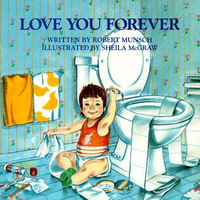I tell the other barfbloggers, people want to hear from others, not just me. Edit the piece – viciously and mercilessly – and it’s all good.
Sure enough, Ashley Chaifetz a PhD student in public policy that Chapman knows, ran a piece in barfblog on April 11, 2013.
Two days later it got picked up by Nancy Shute of NPR; her version goes like this:
(Chaifetz) was more than a little surprised when she got an email from her online pet food purveyor, saying that they’d sold her dry  dog food that might be contaminated with salmonella.
dog food that might be contaminated with salmonella.
Her dog, a corgi-pit bull mix rescue dog named Chloe, had already snarfed her way through half of a 30-pound bag of Natura herring and sweet potato dry food. Uh-oh.
Chaifetz knows the symptoms of foodborne illness in humans, but wasn’t so sure about dogs. The email from the company didn’t clue her in.
Some quick Googling and a call to her veterinarian confirmed that the symptoms are the same in pets: vomiting, diarrhea, lethargy and fever. “She certainly wouldn’t tell me if she had a fever,” Chaifetz says.
Fortunately, Chloe didn’t get sick, and Chaifetz didn’t get sick, either. But other recent outbreaks in pet food have spread to humans, to nasty effect.
Last year, a salmonella outbreak in dry dog food sickened 22 people in North America. Then there was a multiyear salmonella outbreak from 2006 through 2008, with 79 humans falling ill.
What did our food safety policy student learn from her encounter with an outbreak? Two things.
“Salmonella might not be homogenous in the bag,” Chaifetz told The Salt. So even though her dog didn’t get sick, the remaining food could still be contaminated. That bag went in the trash. (The company swiftly sent her a coupon for a replacement bag.)
Fact two: Humans most often get infected from scooping up pet poop — not from handling pet food. “That was a surprise to me, and I’m a person who studies food safety.” (She wrote about her experience for the delightfully titled Barfblog – note from dp, that’s barfblog.com; upper-case is overrated.)
Clearly, diligent hand-washing after pet care is a good idea, even when there isn’t an outbreak.
This latest recall hasn’t infected any people, at least none that the FDA knows of. But it’s been expanded to include cat and ferret foods and treats, so stay tuned.
But poop patrol isn’t the only way that perilous microbes can move from animal to pet. After the 2012 outbreak, the federal Centers for Disease Control and Prevention reported that people most likely were infected from handling their pet’s food.
Our colleague Scott Hensley recalls that not so very long ago, one of his boys considered dog biscuits an ideal snack. Public health experts told him that children under 5 should never handle pet foods or treats.
Guess they meant “or eat them,” either.

 The government’s three-year investigation found that the problems occurred in late 2006 and early 2007.
The government’s three-year investigation found that the problems occurred in late 2006 and early 2007. Australia seems to be
Australia seems to be  the ingredients that the dogs and the cats ate in the wild were much more dense than they are, currently.
the ingredients that the dogs and the cats ate in the wild were much more dense than they are, currently. Foods at its plant in Gaston, S.C., the federal Centers for Disease Control and Prevention said.
Foods at its plant in Gaston, S.C., the federal Centers for Disease Control and Prevention said.  recommendations for pet owners on how to avoid Salmonella infection in pets; that’s good too.
recommendations for pet owners on how to avoid Salmonella infection in pets; that’s good too..jpg) pounds of carrots, a whole cabbage and several other fruits, all from the organic fields of Midsummer Farm, Ms. Laino’s farm in Warwick, N.Y. Finally, she blends the mix with herbs and supplements.
pounds of carrots, a whole cabbage and several other fruits, all from the organic fields of Midsummer Farm, Ms. Laino’s farm in Warwick, N.Y. Finally, she blends the mix with herbs and supplements. minerals and vitamins, they can experience several health disorders, including anemia, broken bones and loss of teeth from lack of calcium.
minerals and vitamins, they can experience several health disorders, including anemia, broken bones and loss of teeth from lack of calcium..jpg) suggested that her recipe might be richer in certain nutrients because the ingredients are organic.
suggested that her recipe might be richer in certain nutrients because the ingredients are organic.  That’s dramatic but I have a flair for drama.
That’s dramatic but I have a flair for drama..jpg) Salmonella doesn’t discriminate.
Salmonella doesn’t discriminate.  Last night Amy and I tuned into the finale of Jon and Kate plus 8, hoping Jon’s rumored making out with college chicks would be addressed. It was not.
Last night Amy and I tuned into the finale of Jon and Kate plus 8, hoping Jon’s rumored making out with college chicks would be addressed. It was not.